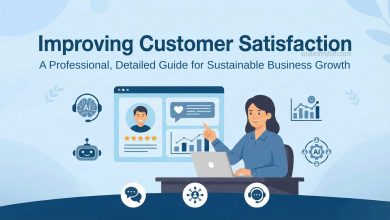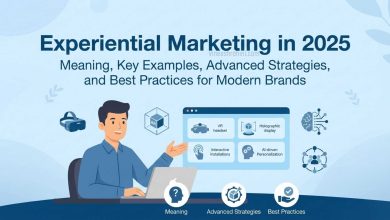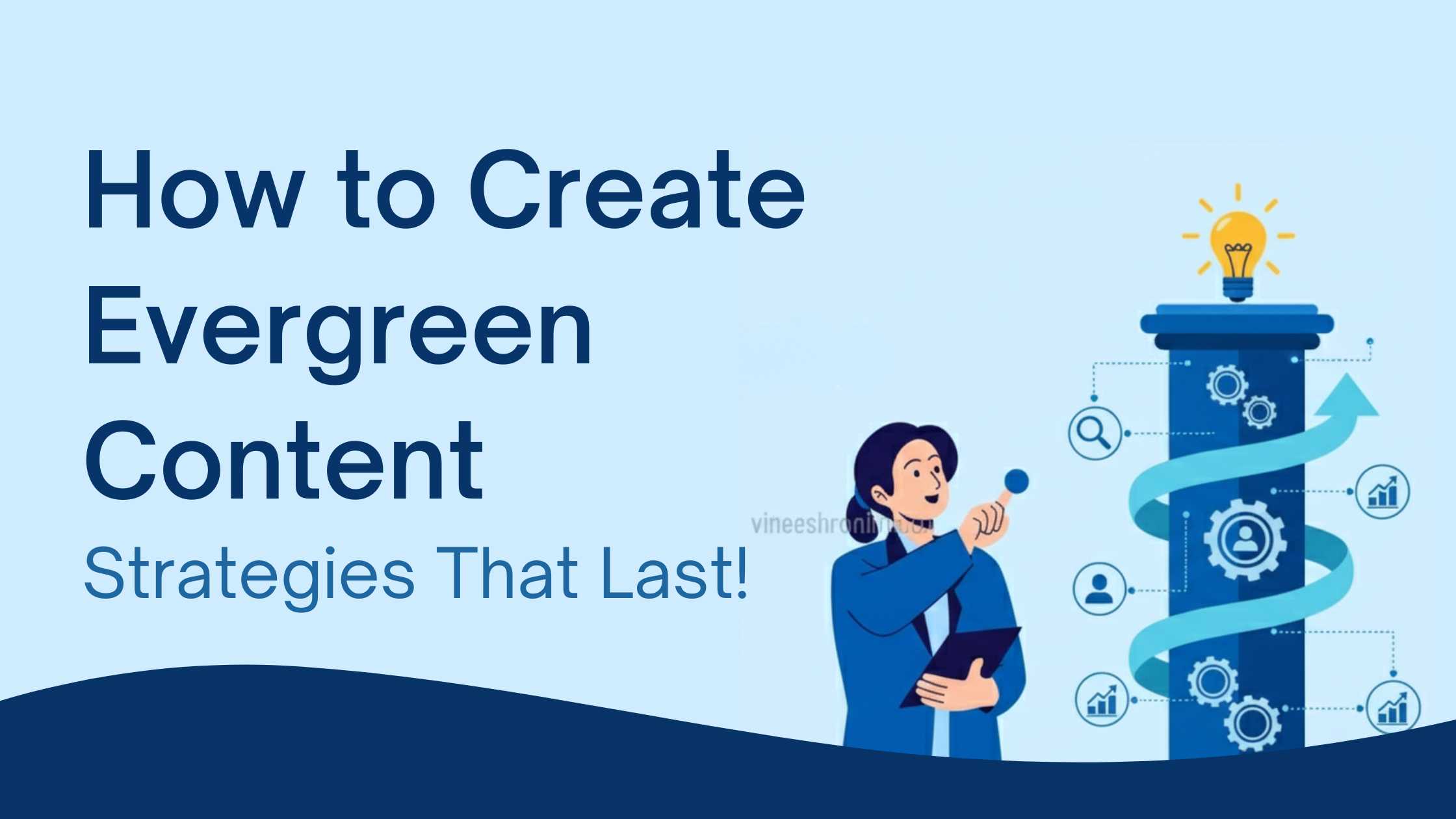How to Use Email Marketing to Increase Sales ? – Comprehensive Guide 2025
Email Marketing to Increase Sales : In the ever-evolving landscape of digital marketing, one strategy that has consistently proven effective for driving sales is email marketing. Email marketing offers businesses a direct line to their customers and potential leads, enabling them to nurture relationships, promote products and services, and ultimately drive revenue. According to the Data & Marketing Association, email marketing provides one of the highest returns on investment (ROI) compared to other digital marketing strategies, with an average ROI of 42:1.
Table of Contents
This comprehensive guide will walk you through the essential steps and strategies to leverage email marketing to increase sales. Whether you’re a small business owner, marketer, or entrepreneur, this guide will help you harness the power of email marketing, build effective campaigns, and drive revenue for your business.
What is Email Marketing?
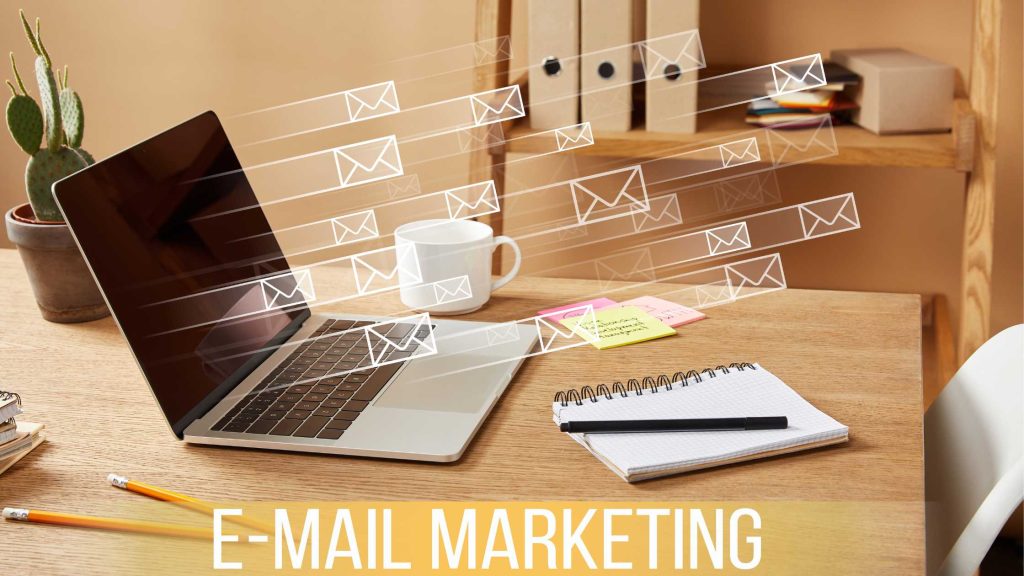
Email marketing refers to the use of email to send commercial messages to an audience.
Also Read : What is Email Marketing ?
It is one of the most cost-effective ways to promote your business, engage with customers, build relationships, and increase sales. The success of email marketing campaigns depends on many factors, including the quality of the email list, the relevance of the content, and the timing of the email sends.
Why is Email Marketing Important for Increasing Sales?
Before diving into how you can use email marketing to increase sales, it’s essential to understand why this marketing strategy is so effective in driving revenue.
- Direct Communication with Customers
Unlike social media or paid ads, email marketing offers businesses a direct line to their target audience. Emails land directly in recipients’ inboxes, where they are more likely to be seen and read. This direct access creates an opportunity for businesses to engage with customers in a more personal way. - Cost-Effective
Compared to other marketing strategies, such as TV ads, radio spots, or print media, email marketing is extremely cost-effective. With minimal investment in tools and resources, businesses can reach a wide audience at a fraction of the cost of traditional marketing. - Highly Measurable
One of the significant benefits of email marketing is its ability to track performance. Metrics such as open rates,CTR, conversion rates, and unsubscribe rates allow marketers to assess the effectiveness of campaigns in real time and optimize their efforts for better results. - Segmentation and Personalization
Email marketing platforms allow businesses to segment their audience and send personalized messages. By tailoring your emails to specific groups based on demographics, preferences, and past behaviors, you can increase the chances of engagement and drive conversions. - Automation
Email marketing automation allows businesses to send timely, relevant emails to subscribers without manual intervention. Automated email sequences, such as welcome emails, abandoned cart reminders, and post-purchase follow-ups, can significantly enhance the customer journey and increase sales.
Features of Email Marketing

Here are some key features of email marketing that you can add to your document:
- Cost-Effective – Email marketing is one of the most affordable digital marketing channels, providing high returns on investment.
- Direct Customer Engagement – Emails allow businesses to communicate directly with customers, improving brand awareness and loyalty.
- Personalization & Segmentation – Emails can be tailored to individual users based on their preferences, behaviors, and purchase history.
- Automation Capabilities – Automated workflows enable businesses to send timely and relevant emails, such as welcome emails and abandoned cart reminders.
- Measurable Performance – Email marketing tools provide insights into open rates, CTR, conversions, and overall campaign performance.
- High ROI – Compared to other marketing strategies, email marketing offers a high return on investment, making it a preferred choice for businesses.
- Scalability – Email marketing can be scaled for both small businesses and large enterprises, making it suitable for any business size.
- A/B Testing Capabilities – Marketers can test different subject lines, content, and call-to-actions to optimize campaign performance.
- Mobile Optimization – Emails can be designed to be mobile-friendly, ensuring a seamless experience for users across devices.
- Enhanced Customer Retention – Regular email communication helps keep customers engaged, increasing customer lifetime value.
- Lead Nurturing – Email campaigns help guide potential customers through the sales funnel, turning leads into paying customers.
- Drip Campaigns – Businesses can send a series of automated emails that educate, inform, and gradually persuade customers to take action.
- Integration with Other Marketing Channels – Email marketing can be combined with social media, content marketing, and paid ads for a holistic approach.
- Customizable Templates – Most email marketing platforms provide ready-made templates that businesses can customize for their branding.
- Regulatory Compliance – Businesses can use email marketing while complying with regulations such as GDPR and CAN-SPAM laws.
- Interactive Content Support – Emails can include interactive elements like surveys, polls, GIFs, and videos to enhance engagement.
- Cart Abandonment Recovery – Automated cart abandonment emails help recover lost sales by reminding customers to complete their purchases.
- Event Promotion – Email marketing is an effective way to promote webinars, product launches, and other events.
- Brand Consistency – Consistent email campaigns help reinforce brand messaging and improve brand recall.
- Seamless Customer Support Integration – Businesses can use email marketing to send support updates, FAQs, and personalized responses to customer inquiries.
Building an Effective Email List
To leverage email marketing to its full potential, you first need a high-quality email list. Without a solid list of engaged subscribers, your email marketing campaigns won’t generate the desired results. Here’s how you can build and maintain a strong email list:
1. Offer Value in Exchange for Email Sign-Ups
The most effective way to grow your email list is by offering something of value to your audience in exchange for their email addresses. This could be a discount, free trial, informative eBook, a checklist, or access to exclusive content. By providing value, you encourage potential customers to subscribe.
2. Create High-Converting Lead Magnets
Lead magnets are valuable pieces of content that businesses offer to their audience in exchange for their contact information. These can include downloadable guides, checklists, webinars, free trials, or product samples. Make sure that your lead magnets align with your target audience’s needs and desires.
3. Use Sign-Up Forms on Your Website
Your website should include clear, prominent email sign-up forms where visitors can easily subscribe to your mailing list. The best placement for these forms includes pop-ups, top banners, or embedded forms on high-traffic pages like blogs or product pages.
4. Leverage Social Media
Social media platforms provide an excellent opportunity to promote your email list. You can run ads on platforms like FB or Insta, directing users to a landing page where they can sign up. Additionally, you can promote your email list via organic posts and stories.
5. Run Paid Ads for Lead Generation
If you’re looking to accelerate your email list growth, consider running paid ads on G, FB, or LinkedIn to attract subscribers. With well-targeted ads and compelling offers, paid ads can significantly increase your list size and lead generation efforts.
Crafting Compelling Email Campaigns
Once you’ve built a solid email list, it’s time to craft compelling email campaigns that will drive sales. Here are some strategies to help you create effective emails that increase engagement and conversions:
1. Personalize Your Emails
Personalization is key to making your emails more engaging. It goes beyond just addressing your recipient by their first name. By using data about your customers (such as purchase history, preferences, or browsing behavior), you can send tailored emails that feel relevant to each individual.
For example, you could send personalized product recommendations based on a customer’s previous purchases, or you could send a birthday email offering a special discount. The more personalized your email, the more likely it is that the recipient will open it and take action.
2. Craft Attention-Grabbing Subject Lines
The subject line is the first thing your subscribers will see when they receive your email, and it plays a major role in whether they open the email or not. A strong subject line should be clear, concise, and compelling. It should pique the reader’s curiosity or create a sense of urgency.
For instance, you could use urgency-based subject lines like “Last Chance for 20% Off!” or curiosity-driven subject lines like “You Won’t Believe What’s Inside.” Always ensure that your subject lines are relevant to the content of the email and aligned with your brand’s tone.
3. Design Mobile-Responsive Emails
With the increasing use of mobile devices to check emails, it’s critical that your emails are mobile-friendly. A well-designed email that displays properly on all devices will result in a higher engagement rate.
Use responsive email design, ensuring that your content, images, and buttons are optimized for mobile screens. Keep your layout clean and simple, with a clear call-to-action (CTA) that’s easy to tap on any device.
4. Create Clear and Actionable CTAs
Your email should have a clear and compelling call-to-action (CTA) that tells recipients what action you want them to take. The CTA should stand out visually and be easy to find. Examples of effective CTAs include “Shop Now,” “Get Started,” “Claim Your Discount,” or “Learn More.”
Make sure the CTA is specific and ties into the overall goal of your email. Whether you’re offering a discount, promoting a new product, or encouraging a webinar sign-up, ensure that your CTA is aligned with your email’s objective.
5. Offer Value and Build Trust
Your emails should not only be about pushing sales. To build trust and establish a strong relationship with your subscribers, you should provide value through informative content. This could include helpful blog posts, industry news, educational resources, or case studies. The goal is to position your business as a valuable resource, making it more likely that customers will choose you when they’re ready to make a purchase.
Using Email Automation to Drive Sales

Email automation can significantly increase sales by sending timely and relevant messages at key moments in the customer journey. Automation allows you to engage with customers without needing to send each email manually. Here are some ways you can use email automation to drive sales:
1. Welcome Emails
The first email you send to a new subscriber is crucial. A well-crafted welcome email can set the tone for your relationship with that customer. Use your welcome email to introduce your brand, thank them for subscribing, and offer an incentive (like a discount) to encourage a first purchase.
2. Abandoned Cart Emails
Abandoned cart emails are one of the most powerful forms of email automation. If a customer adds products to their cart but doesn’t complete the purchase, sending a series of reminder emails can nudge them back to your site to finalize their purchase.
You can also offer an additional incentive, like a discount or free shipping, to encourage the customer to complete the purchase.
3. Post-Purchase Follow-Up Emails
After a customer makes a purchase, follow up with a thank-you email to show appreciation for their business. This is also an opportunity to recommend other products they may be interested in, or offer them a discount on future purchases.
4. Re-Engagement Emails
If a subscriber hasn’t interacted with your emails in a while, it’s time to re-engage them. Re-engagement emails are designed to remind inactive subscribers of the value your business offers. Consider offering a special promotion or asking for feedback to bring them back into the fold.
5. Product Recommendations and Upselling
After a customer makes a purchase, send automated emails with personalized product recommendations based on their purchase history. You can also offer upsells or cross-sells, encouraging customers to purchase related items.
Measuring Email Campaign Performance
The final step in using email marketing to increase sales is to measure the effectiveness of your campaigns. By tracking key performance indicators (KPIs), you can understand what’s working and what needs improvement. Some important metrics to track include:
1. Open Rate
The open rate measures how many recipients opened your email. A low open rate could indicate that your subject lines are not compelling or that your emails are not reaching the right audience.
2. CTR
The CTR measures how many recipients taped on a link within your email. This is a crucial metric for understanding the effectiveness of your email content and CTAs.
3. Conversion Rate
The conversion rate measures how many recipients took the desired action, such as making a purchase or signing up for a service. This metric is the ultimate indicator of your email campaign’s success in driving sales.
4. Unsubscribe Rate
A high unsubscribe rate may indicate that your email content is not resonating with your audience or that you’re sending too many emails. Use this data to adjust your email frequency and content strategy.
5. Bounce Rate
The bounce rate measures how many emails failed to reach recipients. High bounce rates may indicate issues with your email list, such as outdated or invalid email addresses.
Email Marketing to Increase Sales – Conclusion
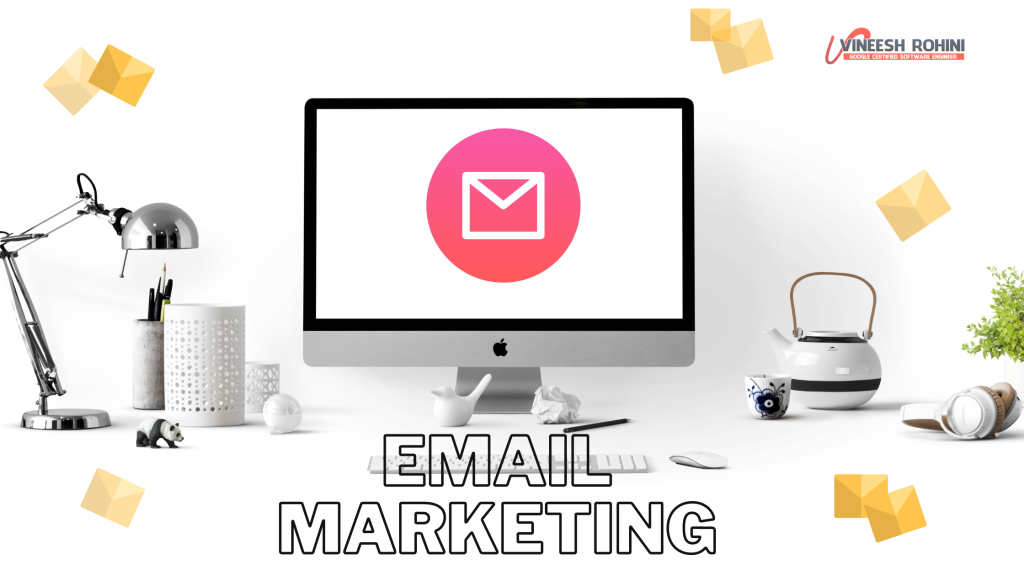
Email marketing remains one of the most effective and powerful tools for increasing sales in today’s digital marketing landscape. By building a quality email list, creating personalized and engaging content, automating key campaigns, and measuring your success, you can significantly enhance your sales efforts and grow your business.
Buy Now : Email Marketing Mastery Course
Remember, the key to successful email marketing is providing value to your subscribers and building trust. Focus on delivering relevant, targeted content and optimizing your campaigns for better engagement and conversions. With these strategies, you can harness the full potential of email marketing to drive revenue and take your business to new heights.
Keywords : Email Marketing to Increase Sales – Email Marketing to Increase Sales 2025 , Email Marketing to Increase Sales and business – Email Marketing to Increase Sales in 2025 , Email Marketing to Increase Sales and profit , Email Marketing to Increase Sales in india , Email Marketing to Increase Sales , Email Marketing to Increase Sales details
Disclaimer: The information provided in this guide is for educational and informational purposes only. While we strive to offer accurate and up-to-date insights on email marketing strategies, we do not guarantee specific results or increased sales. Business success depends on various factors, including market conditions, audience engagement, and execution of strategies. Always conduct your own research and consult with a professional before implementing any marketing tactics. We are not responsible for any business outcomes resulting from the use of this information.
